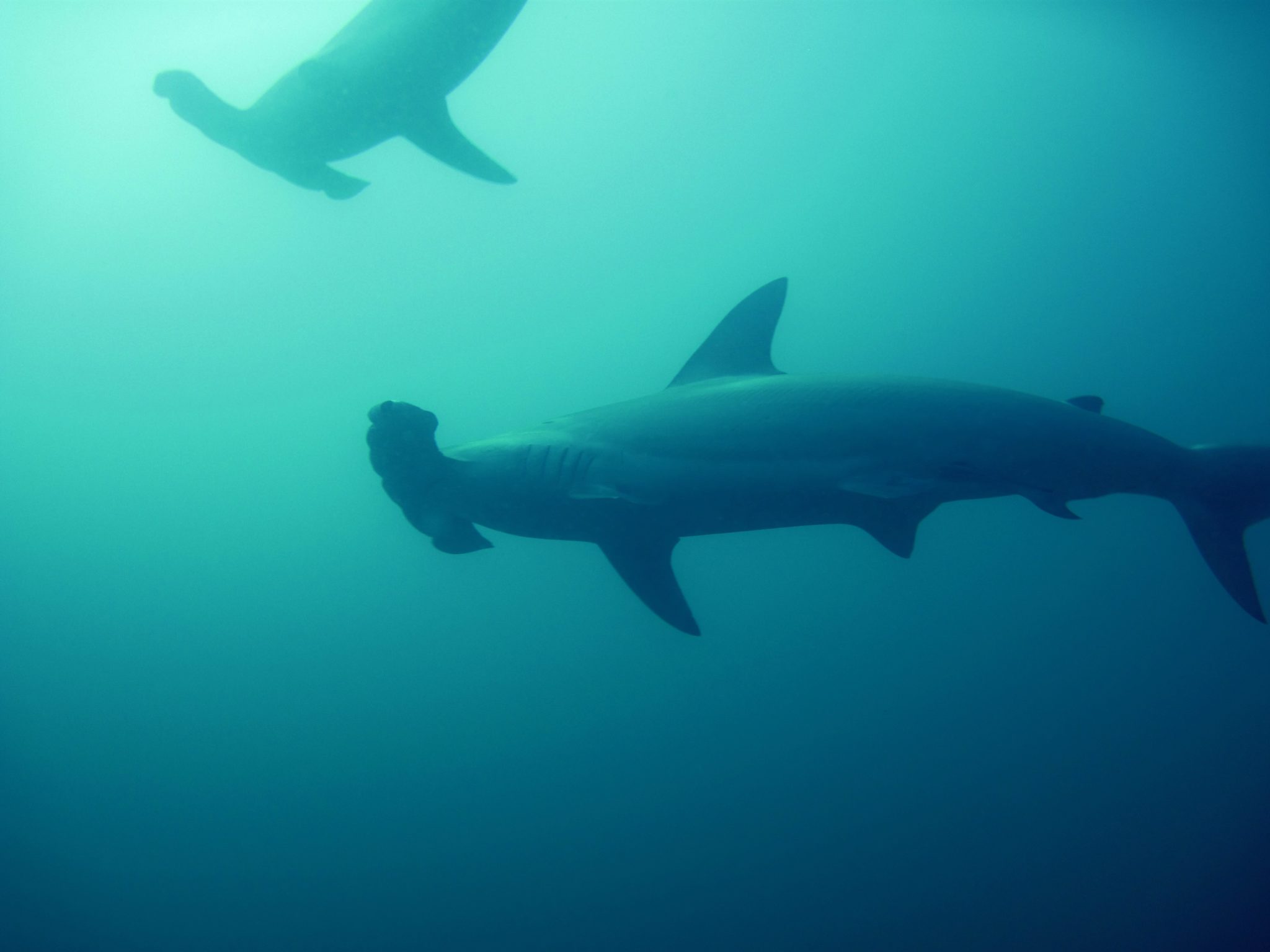
By Alison Thompson, guest author
Known for their big teeth, powerful bites, and not-so-pretty smiles, sharks are some of our ocean’s biggest and baddest predators. From Finding Nemo to Jaws, sharks are depicted as fearsome predators with voracious appetites and jagged-toothed grins. What you might not know about sharks though, is that they can be intelligent, agile, sometimes lazy, and curious critters with a keen sense of smell and direction. Sharks are apex predators, helping to keep our ocean ecosystems balanced and healthy from the top of the food chain. There are many sharks species found in our National Marine Sanctuary System from great white sharks to whale sharks. In preparation for Discovery Channel’s Shark Week, dive into these fin-tastic shark facts and learn something new about our only ocean predators with a theme song (dunnnn dunnn)!
Sharks in Sanctuaries
Sharks are the “park managers” of our ocean’s playgrounds in their role as apex predators. Our sanctuaries are great living laboratories for shark research. Researchers study species like whale sharks, bull sharks, and great white sharks to understand how their behaviors, migration patterns, and feeding habits affect ecosystems in the sanctuaries. In Flower Garden Banks National Marine Sanctuary, researchers study whale shark movement between coral sites to better understand their migration patterns. At Greater Farallones National Marine Sanctuary, implementation of the White Shark Stewardship Project has helped us protect and conserve the white shark population in the sanctuary while keeping seal populations at sustainable levels. For more information on our National Marine Sanctuary System and the sharks in our sanctuaries visit sanctuaries.noaa.gov.
Whale Sharks

Photo by: Marissa Nuttall/NOAA
Whale sharks are carnivores, but they don’t hunt their prey like most other shark species. Whale sharks are filter feeders, meaning, they open their giant mouths—five feet wide to be exact—and swallow water to filter out plankton and other prey from their gills. Whale sharks migrate long distances and have been spotted in Flower Garden Banks National Marine Sanctuary moving between the protected coral reef sites. How are whale sharks unique?
Whale sharks are the largest fish in the world, growing up to 40 feet long and weighing as much as a school bus!
Bull Sharks
Bull sharks are often referred to by experts as our ocean’s fiercest and most aggressive shark. These sharks prefer murky, coastal, tropical waters. They are known to eat fish, dolphins, turtles, and even other sharks. Bull sharks are found in Gray’s Reef National Marine Sanctuary and Florida Keys National Marine Sanctuary. What makes bull sharks different than other sharks?
Able to travel between saltwater and freshwater environments as a result of their uniquely adapted kidneys, bull sharks are one of the toughest predators in our ocean because they can thrive wherever they go!
Nurse Sharks

Photo by: NOAA
Nurse sharks are slow-moving, bottom-dwelling sharks that feed on squid, urchins, and crustaceans. One of their most distinctive features is the barbels they have between their nose that look like whiskers and are used to help them smell food. Nurse sharks are commonly found at Gray’s Reef National Marine Sanctuary and Flower Garden Banks National Marine Sanctuary. What makes a nurse shark special
The nurse shark got its name because of the noise it makes when it feeds. When the nurse shark feeds on the ocean floor, it makes a sucking noise, resembling the sound of a baby nursing.
Great White Sharks

Weighing up to 5,000 pounds and reaching up to 20 feet in length, great white sharks hunt with force and agility. Great white sharks can be seen breaching to capture their prey, and are known to hunt seals, dolphins, turtles, and even whales. Great white sharks migrate long distances from South Africa to Australia and from the Hawaiian Islands to California for seasonal mating and feeding. In fact, great whites frequent Channel Islands, Monterey Bay, Cordell Bank, and Greater Farallones National Marine Sanctuaries along the California Coast. What makes these giant predators so special in the shark world?
Great white sharks have an incredible sense of smell and vision. They can smell a single drop of blood floating in 10 billion drops of water. Scientists have also discovered that although great whites have tiny brains compared to their body size, nearly a quarter of their brain is devoted to scent. That is one killer sense of smell!
Check your local listings for Shark Week programs and times on Discovery.
